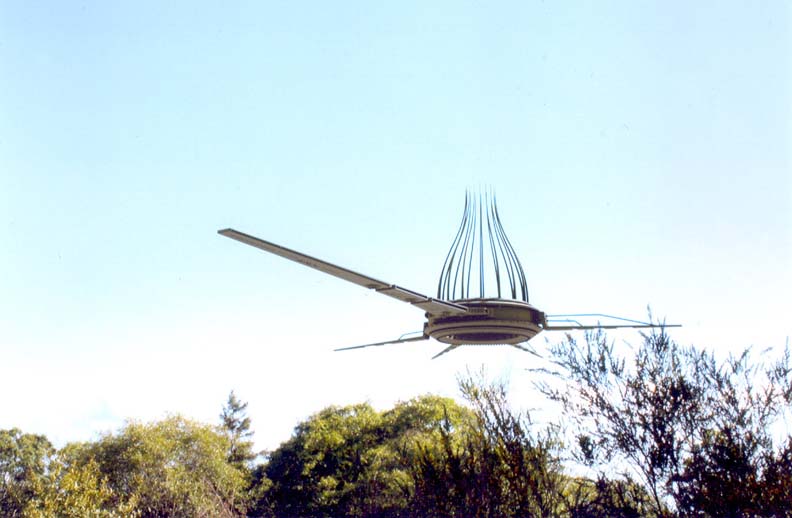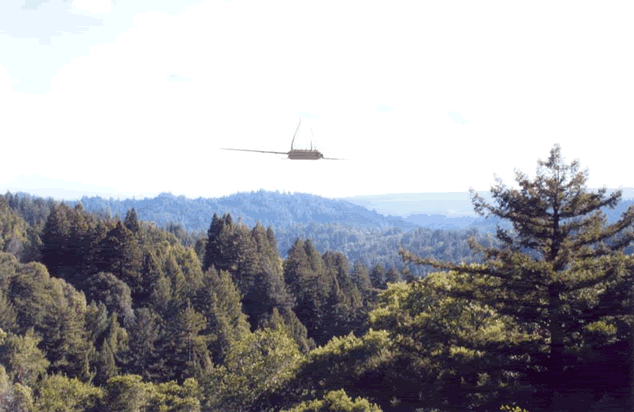I enjoyed Pete Bowes’ most recent “bloodhound” post, but I was pretty sure I’d seen many, many more ads placed by Prosper McTaggart Thomson than he listed there. So I thought I’d have a go at compiling my own list. So… here are all the small ads I found for 1947 (including a single one from 1946).
Note that I assume we can tie all these addresses:
- 200 Hindley St
- 7 Main St, Henley Beach
- “Robinvale”, Altamira Crescent, Belair
- 90a Moseley St, Glenelg
…and all the various P.O. Boxes to Prosper Thomson. Do you agree?
Dec 1946
[18 Dec] HOUSE, will purchase for cash to £ 1,500, prefer hills district, vacant possession, can trade 1939 Ford V 8 sedan, as new, if reg., NSPR £310 Apply P. M. Thomson, G.P.O., Adelaide.
Jan 1947
[4 Jan] WANTED car, tourer, sedan. or rdst., reasonable order. £50 to £200, by ex-serviceman for business: consider buckboard. Full particulars as condition and price. Will inspect 50 mile radius Adelaide. Thomson, 7 Main st.. Henley Beach, after 1 pm, or Sunday.
[8 Jan] MODERN house, suit couple. Adelaide or hills, will exchange 1939 Ford V8 sedan. as new. NSPR £306. with extras, if required. Thomson, 7 Main st. Henley Bch.
[22 Jan] CAMERA Hertie F.4.5 lens, 5 speed shutter, takes 16 pictures on 127 film, small compact job, carrying case, films, exchange for crystal water set and fruit set. Thomson, 7 Main st., Henley Beach.
[22 Jan] UTILITY Bedford coupe front. 10 h p., 1939. NSPR £210, appearance as new, exchange for 8 to 14 h.p. car. 1938 or later. Thomson. 7 Main st.. Henley Beach.
[25 Jan] WANTED 10 to 14 h.p. car or utility, urgent, pay your price, cash, or take over terms. Home week-end, or inspect anywhere. Thomson. 7 Main st., Henley Beach.
[27 Jan] WANTED 10 to 14 h.p. car or utility, urgent, pay your price, cash or take over terms. Home week-end or inspect anywhere. Thomson, 7 Main St., Henley Beach.
Feb 1947
[1 Feb] MORRIS 10-h.p. 1940 saloon, series M, similar, as now being sold as 1947 models, for £635, previously owned by Melbourne doctor, exceptionally well kept. Just driven overland by me, averaged 38 m.p.gal., performed perfectly, NSPR £288 Exchange for larger sedan and cash diff. Thomson, 7 Main st., Henley Beach.
[12 Feb] WANTED urgently, car, suit city traveller, 8 to 14 h.p. preferred, consider larger car, utility, pay good price. Clinic Distributors. Box 1009J. G.P.O., Adelaide.
[12 Feb] CHEV. wanted. 1941 sedan, consider 1940. or similar car for taxi, pay your price for good job. Thomson. 7 Main st Henley Beach. Inspect anywhere.
[12 Feb] CAMERA. Foth 120, folding, f4.5, double anastigmat lens, 5 speed shutter, extra good, little used. £12/10/- cash. Thomson, 7 Main st, Henley
[15 Feb] WANTED, 1928 to 1932 American sedan, tourer or roadster, pay good price. Thomson, 7 Main st., Henley Beach, week-end.
[15 Feb] MANTEL 5-valve Mickey Mouse, good interstate performance, perfect order, modern plastic cabinet, cost £19/19/-. accept £14 cash. Thomson. 7 Main st, Henley.
[19 Feb] WANTED, 1928 to 1932 sedan tourer or roadster, good order, pay cash or take over terms. Thomson, 200 Hindley St.. Adelaide. 10 a.m. to 3 p.m.
[22 Feb] CAMERA, Kodak, folding. No. 2A, double lens, as new; sell or exchange for auto. .22 rifle. Thomson. 7 Main st, Henley Beach.
Mar 1947
[1 Mar] MORRIS 10 h.p. saloon. Series M. 1940. same cars now selling as 1947 models for £635. This car has Just been rebored, crankshaft ground, all bearings renewed, brakes relined. king pins replaced, and is definitely equal to new car and represents rare opportunity to acquire most popular sedan . Doing approx. 40 m.p. gal of petrol. We require large sedan or coupe, like Chev., Dodge or similar, suitable country traveller, on exchange basis. NSPR of Morris £298. genuine NSPR deal. See Mr. Thomson. Clinic Distributors. 200 Hindley st, business hours.
[1 Mar] WANTED, house or flat, furn, or unfurn., in hills or Blackwood d’st., business people. Thomson. Box 1009J. G.P.O., Adelaide.
[5 Mar] DODGE 1923 single seater, very good order mechanically, tyres as new, reg. 6 months.,NSPR £110, accept £85, ready drive anywhere. Thomson. 200 Hindley street.
[6 Mar] MORRIS 10 h.p. sedan. 1941, NSPR £309. Just rebored, overhauled, extent. £65. now as new. exchange for 8 to 14 h-p. utility or large car, suitable country traveller. Clinic Distributors. 200 Hindley St.
[8 Mar] WANTED, American tourer, rdstr, or sedan. Whippet. Rugby. Chev, similar. Consider utility. Pay cash. Inspect anywhere. Clinic Distributors, 200 Hindley
[8 Mar] ELECTRIC copper or washing machine. Inspect anywhere, pay cash. Thomson. Box 1009J, G.P.O.
[8 Mar] WANTED, car, any make or model, buckboard would do. £50 to £175 cash. Urgent, by discharged A.I.F. man. Thomson, Box 1009J, G.P.O.
[12 Mar] RIFLE. .22. auto, or repeater, pay cash or exchange Healing cycle, as new. Thomson, 200 Hindley st.
[13 Mar] RIFLE. .22 repeater or auto, in good order. Will inspect. Thomson. Box 1009J. G.P.O.
[14 Mar] GENT’S Healing cycle, cond. as new, tyres new, Eadie coaster new, price £18/18/-, accept £9/10/-. Thomson, 200 Hindley St.
[15 Mar] PARTNER for used car business, active or silent, good returns assured. £500 to £1,000, money under own control. I have city premises and 10 years experience in motor trade, stocks assured. Thomson. Box 1009J, G.P.O.
[15 Mar] RIFLE. .22 repeater or auto. In good order. Will inspect. Thomson. Box 1009J. G.P.O.
[19 Mar] MORRIS 10 h.p. saloon. 1941. extra good mechanically. NSPR £311, exchange tourer or utility. 1936. 8 to 14 b.p. Clinic Distributors 200 Hindley st.
[22 Mar] WANTED Morris 8/40 or similar, or utility, to 10 h.p.: pay your price, cash Thomson, ‘Robinvale,’ Altamira Crescent Belair. near Methodist Church.
[22 Mar] MAN to clean block and gardening. Thomson, Alta Mira Crescent, Belair, 2 doors from Methodist Church.
[26 Mar] WANTED urgently, tourer or roadster, by ex-serviceman, commencing business, utility will do, cash £75 to £150. Will inspect. McTaggart, Box 1009J. G.P.O.
[26 Mar] WANTED. Morris. Standard. Vaux, 8 to 14 h.p, car or prefer utility. Thomson. Alta Mira crescent. Belair. Inspect anywhere.
[29 Mar] WANTED urgently by ex-serviceman about commence business, car or buckboard, £50 to £150. Will call, pay cash. McTaggart, Box 953H. G.P.O. Adelaide.
[29 Mar] WANTED Bedford utility or similar make 8 10 14 h.p, 1937 to 1940; cash to £300. Thomson. Alta Mira cres, Belair. 2 doors from Methodist Church or letter to P.O. Belair.
[29 Mar] RIFLE, automatic. .22. as new; Healing gent’s cycle, unmarked, cost £16/10 accept £16 the lot. Thomson. Alta Mira crescent. Belair. 2 doors from Methodist Church.
Apr 1947
[5 Apr] WANTED, car or buckboard, cash, £50 to£200. Thomson, Alta Mira cres., Belair
[5 Apr] WOMAN for washing, cleaning, no children. Mrs Thomson, Robinvale, Alta Mira Cres., Belair
[5 Apr] STANDARD 10 h.p. 1938 tourer, new 3 tyres, hood, curtains, recently overhauled. NSPR £170. make clean swop for utility, 6 to 14 h.p. Thomson. Alta Mira crescent. Belair. 2 doors past Methodist Church.
[12 Apr] WANTED urgently by ex-serviceman, car, any make or model, reliable utility would do, cash, about £100 to £150. McTaggart. Box 953H. G.P.O., Adelaide.
[12 Apr] FORD A utility, factory built steel body, just reconditioned to extent of £65. new tyres. 6 wheel equip, NSPR £85. exchange outright or take car part payment. Thomson. Alta Mira cres, Belair. 2nd house from Methodist Church.
[19 Apr] WANTED car or buckboard, reas. order, any make suit traveller, cash £75 to £150. McTaggart. Box 953H. G.P.O.
[19 Apr] BEAN tourer, 14 h.p., 1928-30 series, sound mechanically, well shod, good hood, complete tools, instruct, book, rgd.; NSPR £179, accep: £135 cash. Thomson. Alta Mira Cres, Belair, 2nd house past Methodist Church. Sat. only.
[26 Apr] WANTED—Woman to do washing, cleaning, one day a week, no family. Mrs. Thomson, Alta Mira Crescent, Belair.
[26 Apr] MORRIS 8/40 utility, 1940, used privately. as new. NSPR £205. Exchange for car. 1938 or later on NSPR basis. Thomson. Alta Mira Crescent. Belair. 2nd house from Methodist Church.
[30 Apr] WANTED, building, suitable for garage business, city or suburbs. ex-AIF man, good references. Rent in advance. Thomson. Box 953H. G.P.O.
[30 Apr] WANTED urgently, any type or make car, going order, £75 to £150. Buckboard would do. I will inspect anywhere if give full details. Thomson. Box 953H, G.P.O., Adelaide.
May 1947
[7 May] GENTLEMAN, ex -2nd A.I.F., with 1940 Austin car. exper. traveller, collector, had own garage, business 5 years, good refs., any kind employment, perm, or casual, required urgent. Thomson, Box 953H, G.P.O.
[8 May] VACANT possession, all electric, jarrah 4 rooms, large louvred glass sleepout, modern kitchen and bathroom, large block, nicely laid out garden, definitely best position in Belair, 7 miles from G.P.O., 2 minutes Belair rly. Stn., built 1939. Require sedan car, 1938-46 model, suitable taxi, balance cash. Write Box 953H, G.P.O. for appoint.
[10 May] GENTLEMAN, ex-2nd A.I.F., with 1940 Austin car, exper. traveller, collector, had own garage, business 5 years, good refs, any kind employment, perm, or casual, required urgent. Thomson, Box 953H, G.P.O.
[17 May] VACANT pos., all-electric 5-roomed jarrah bungalow, condition as new, 2 minutes Belair rly. stn., 7 miles from city; car taken as part payment if desired. Write Box 953H. for appoint.
[24 May] WANTED urgently, car, any type, reasonable condition, utility would do, £75 to £150, inspect anywhere if full particulars given, spot cash. Thomson. Box 953H. G.P.O, Adelaide.
[28 May] WANTED desperately by ex-A.I.F. man, car, any type, for business, utility will do, can pay cash £75 to £200. Will inspect anywhere city or country, if full particulars given. Thomson. Box 953H, G.P.O., Adelaide.
[28 May] GENTLEMAN. ex-2nd A.I.F.. experienced traveller and collector, recently sold own business, have 1940 Austin car, seeks employment any kind, perm, or casual, good rels., sound financial position. Thomson. Box 953H. G.P.O., Adelaide
[31 May] WANTED, building, suit garage, workshop, city or subs.; pay ingoing or buy plant; urgent. Thomson. Box 953H. G.P.O., Adel.
[31 May] WANTED any make car. reasonable order, utility would do, cash to £150 or take over terms. Inspect anywhere. Full particulars to Thomson, Box 953H. G.P.O., Adelaide.
Jun 1947
[28 Jun] WANTED flat, or anything self-contained, will purchase contents if necessary or take short term basis, req. by 1/8/47 or sooner Thomson, Box 953H, G.P.O.
Jul 1947
[5 Jul] YOUNG man, ex-2nd A.I.F., experienced traveller, also experienced all sections of motor trade, recently disposed of garage business, own car, seeks position. Consider any type employment. Have good references. P. Thomson, Box 953H, G.P.O. Adelaide.
[22 Jul] FORD 10 h.p. sedan, 1937, new car appearance, 35 miles gallon, good tyres NSPR £155, exchange for car suitable taxi, adjust diff. cash. Thomson, Alta-Mira Cres., Belair, 2 doors from Methodist Church.
[26 Jul] FORD 10 h.p. Prefect, 1937-38 mid, 4-door sedan, camp seat, roomy luggage compartment, in new car condition. NSPR £155. exchange for car suitable taxi and pay cash diff. Thomson, “Robinvale,” Alta-Mira cres, Belair. 2 doors from Methodist Church.
Aug 1947
Sep 1947
Oct 1947
[18 Oct] WANTED 1946 or 1947 sedan, by ex-A.I.F. man for taxi, have permit, urgent. Thomson. 90a Moseley st. Glenelg. Phone X 3239.




